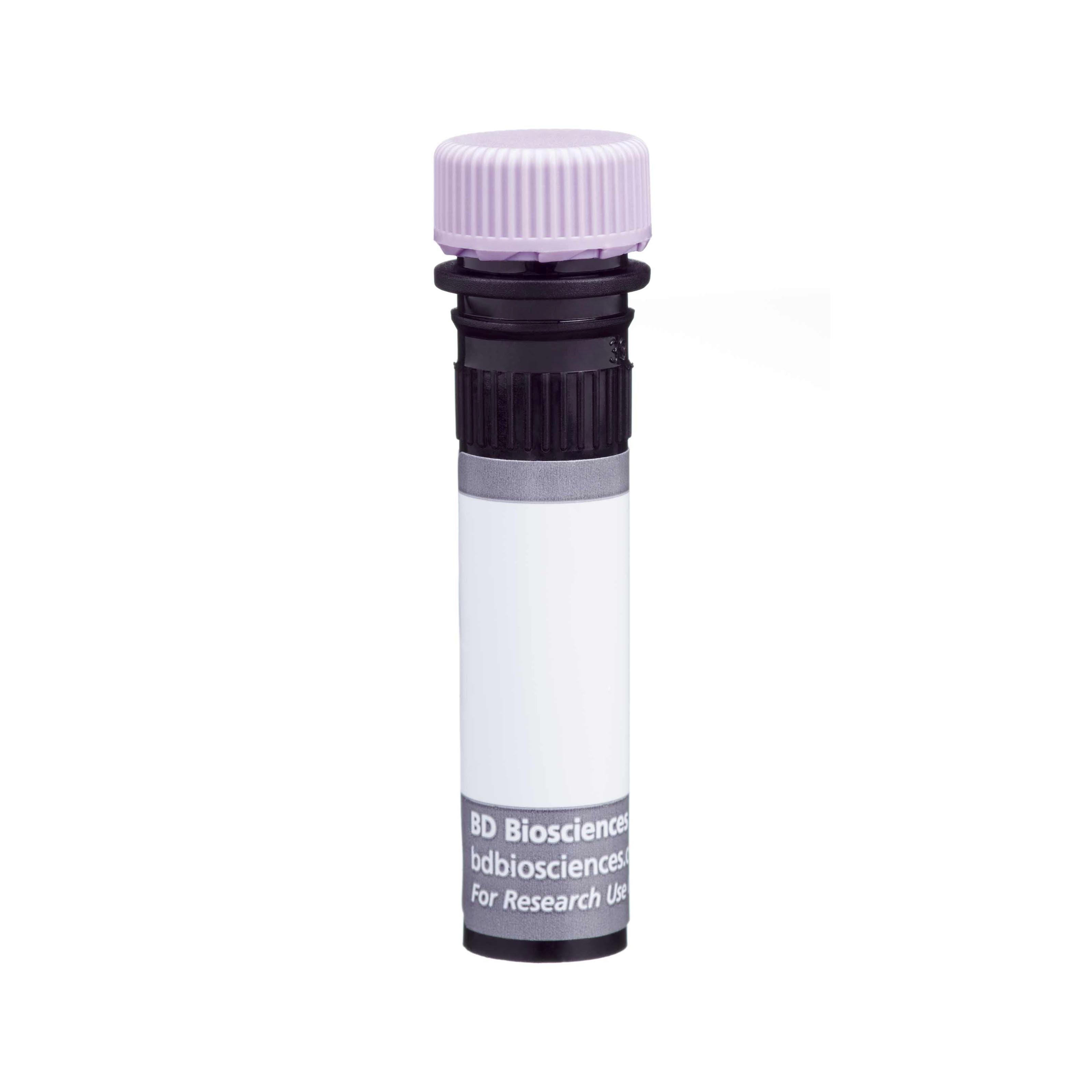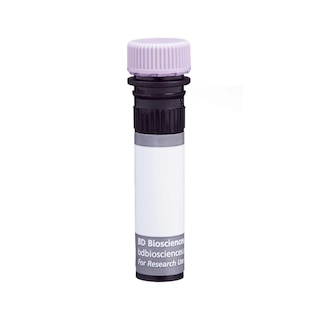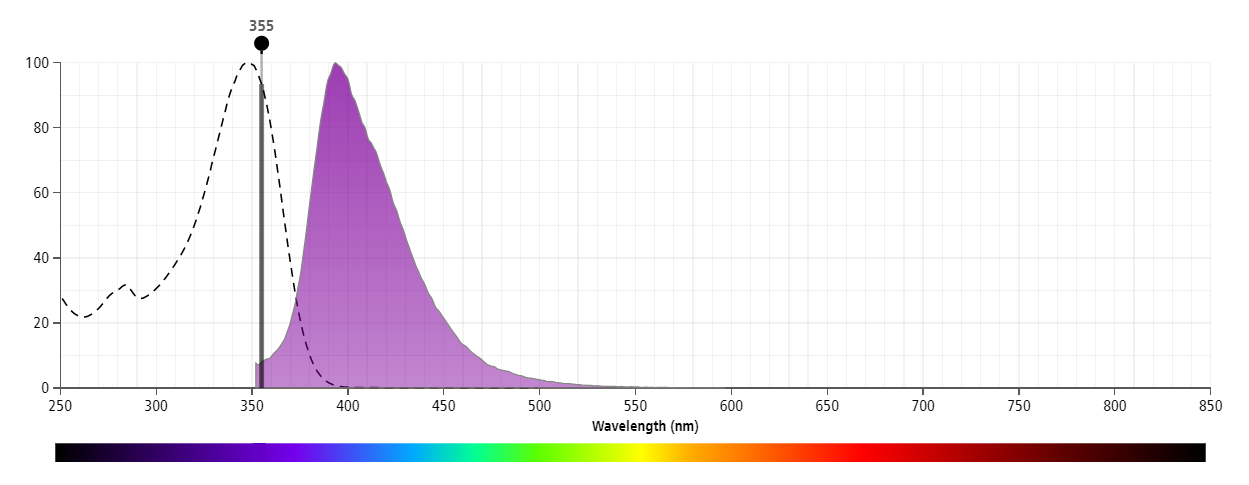Old Browser
This page has been recently translated and is available in French now.
Looks like you're visiting us from {countryName}.
Would you like to stay on the current country site or be switched to your country?


Regulatory Status Legend
Any use of products other than the permitted use without the express written authorization of Becton, Dickinson and Company is strictly prohibited.
Preparation And Storage
Recommended Assay Procedures
For optimal and reproducible results, BD Horizon Brilliant Stain Buffer should be used anytime two or more BD Horizon Brilliant dyes (including BD OptiBuild Brilliant reagents) are used in the same experiment. Fluorescent dye interactions may cause staining artifacts which may affect data interpretation. The BD Horizon Brilliant Stain Buffer was designed to minimize these interactions. More information can be found in the Technical Data Sheet of the BD Horizon Brilliant Stain Buffer (Cat. No. 563794).
Product Notices
- This antibody was developed for use in flow cytometry.
- The production process underwent stringent testing and validation to assure that it generates a high-quality conjugate with consistent performance and specific binding activity. However, verification testing has not been performed on all conjugate lots.
- Researchers should determine the optimal concentration of this reagent for their individual applications.
- An isotype control should be used at the same concentration as the antibody of interest.
- Caution: Sodium azide yields highly toxic hydrazoic acid under acidic conditions. Dilute azide compounds in running water before discarding to avoid accumulation of potentially explosive deposits in plumbing.
- For fluorochrome spectra and suitable instrument settings, please refer to our Multicolor Flow Cytometry web page at www.bdbiosciences.com/colors.
- Please refer to www.bdbiosciences.com/us/s/resources for technical protocols.
- BD Horizon Brilliant Stain Buffer is covered by one or more of the following US patents: 8,110,673; 8,158,444; 8,575,303; 8,354,239.
- BD Horizon Brilliant Ultraviolet 395 is covered by one or more of the following US patents: 8,158,444; 8,575,303; 8,354,239.
Companion Products






The AA4.1 monoclonal antibody specifically recognizes the Early B Lineage antigen which is also known as CD93, AA4 antigen, Ly-68, and Complement component C1q receptor (C1qRp). This 130-140-kDa type I transmembrane glycoprotein is expressed on immature B lymphocytes in the adult bone marrow and on hematopoietic progenitors and stem cells in adult bone marrow, fetal liver, and embryonic yolk sac. Although CD93+ cells are most plentiful in adult mouse bone marrow, a smaller number of CD93+ cells which express lower CD93 levels can be detected in the adult spleen using bright fluorescent conjugates of the AA4.1 antibody or an amplified indirect immunofluorescent staining procedure. It has been observed that the staining pattern of the 493 monoclonal antibody is similar to that of the AA4.1 antibody, in that both antibodies precipitate molecules of the same molecular weight. Staining with the AA4.1 antibody is not blocked by the 493 antibody. These results suggest that the antibodies recognize separate epitopes on the same Early B Lineage antigen.
The antibody was conjugated to BD Horizon™ BUV395 which is part of the BD Horizon Brilliant™ Ultraviolet family of dyes. This dye has been exclusively developed by BD Biosciences to have minimal spillover into other detectors, making it an optimal choice for multicolor flow cytometry. With an Ex Max at 348 nm and an Em Max at 395 nm, BD Horizon BUV395 can be excited with a 355 nm laser and detected with a 379/28 filter.

Development References (9)
-
Allman D, Li J, Hardy RR. Commitment to the B lymphoid lineage occurs before DH-JH recombination. J Exp Med. 1999; 189(4):735-740. (Clone-specific: Flow cytometry, Fluorescence activated cell sorting). View Reference
-
Allman D, Lindsley RC, DeMuth W, Rudd K, Shinton SA, Hardy RR. Resolution of three nonproliferative immature splenic B cell subsets reveals multiple selection points during peripheral B cell maturation. J Immunol. 2001; 167(12):6834-6840. (Clone-specific: Flow cytometry, Fluorescence activated cell sorting). View Reference
-
Auerbach R, Huang H, Lu L. Hematopoietic stem cells in the mouse embryonic yolk sac. Stem Cells. 1996; 14(3):269-280. (Clone-specific). View Reference
-
Jordan CT, McKearn JP, Lemischka IR. Cellular and developmental properties of fetal hematopoietic stem cells. Cell. 1990; 61(6):953-963. (Clone-specific: Flow cytometry). View Reference
-
Lacaud G, Carlsson L, Keller G. Identification of a fetal hematopoietic precursor with B cell, T cell, and macrophage potential. Immunity. 1998; 9(6):827-838. (Clone-specific). View Reference
-
Li YS, Wasserman R, Hayakawa K, Hardy RR. Identification of the earliest B lineage stage in mouse bone marrow. Immunity. 1996; 5(6):527-535. (Clone-specific: Flow cytometry, Fluorescence activated cell sorting). View Reference
-
McKearn JP, Baum C, Davie JM. Cell surface antigens expressed by subsets of pre-B cells and B cells. J Immunol. 1984; 132(1):332-339. (Immunogen: Cell separation, Depletion, Flow cytometry). View Reference
-
Paige CJ, Gisler RH, McKearn JP, Iscove NN. Differentiation of murine B cell precursors in agar culture. Frequency, surface marker analysis and requirements for growth of clonable pre-B cells. Eur J Immunol. 1984; 14(11):979-987. (Clone-specific). View Reference
-
Szilvassy SJ, Cory S. Phenotypic and functional characterization of competitive long-term repopulating hematopoietic stem cells enriched from 5-fluorouracil-treated murine marrow. Blood. 1993; 81(9):2310-2320. (Clone-specific: Flow cytometry, Fluorescence activated cell sorting). View Reference
Please refer to Support Documents for Quality Certificates
Global - Refer to manufacturer's instructions for use and related User Manuals and Technical data sheets before using this products as described
Comparisons, where applicable, are made against older BD Technology, manual methods or are general performance claims. Comparisons are not made against non-BD technologies, unless otherwise noted.
For Research Use Only. Not for use in diagnostic or therapeutic procedures.
Report a Site Issue
This form is intended to help us improve our website experience. For other support, please visit our Contact Us page.